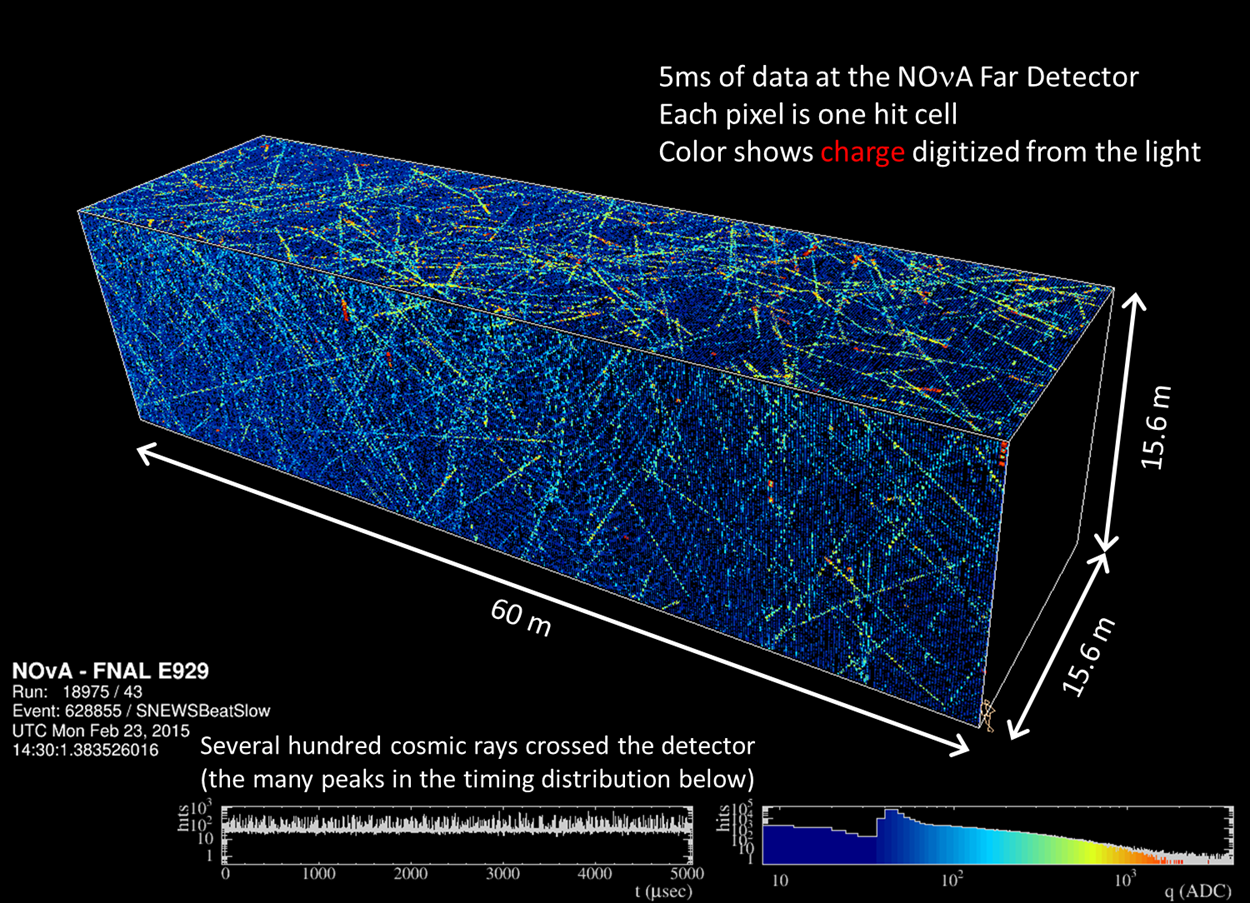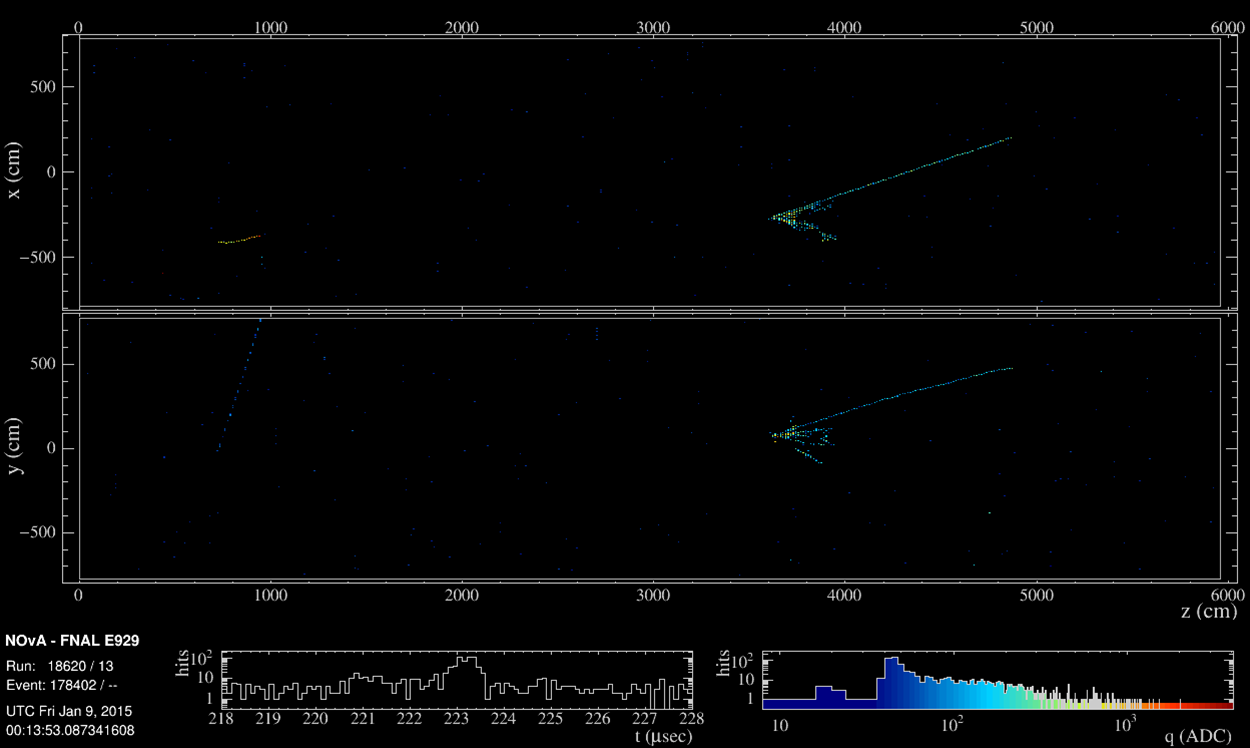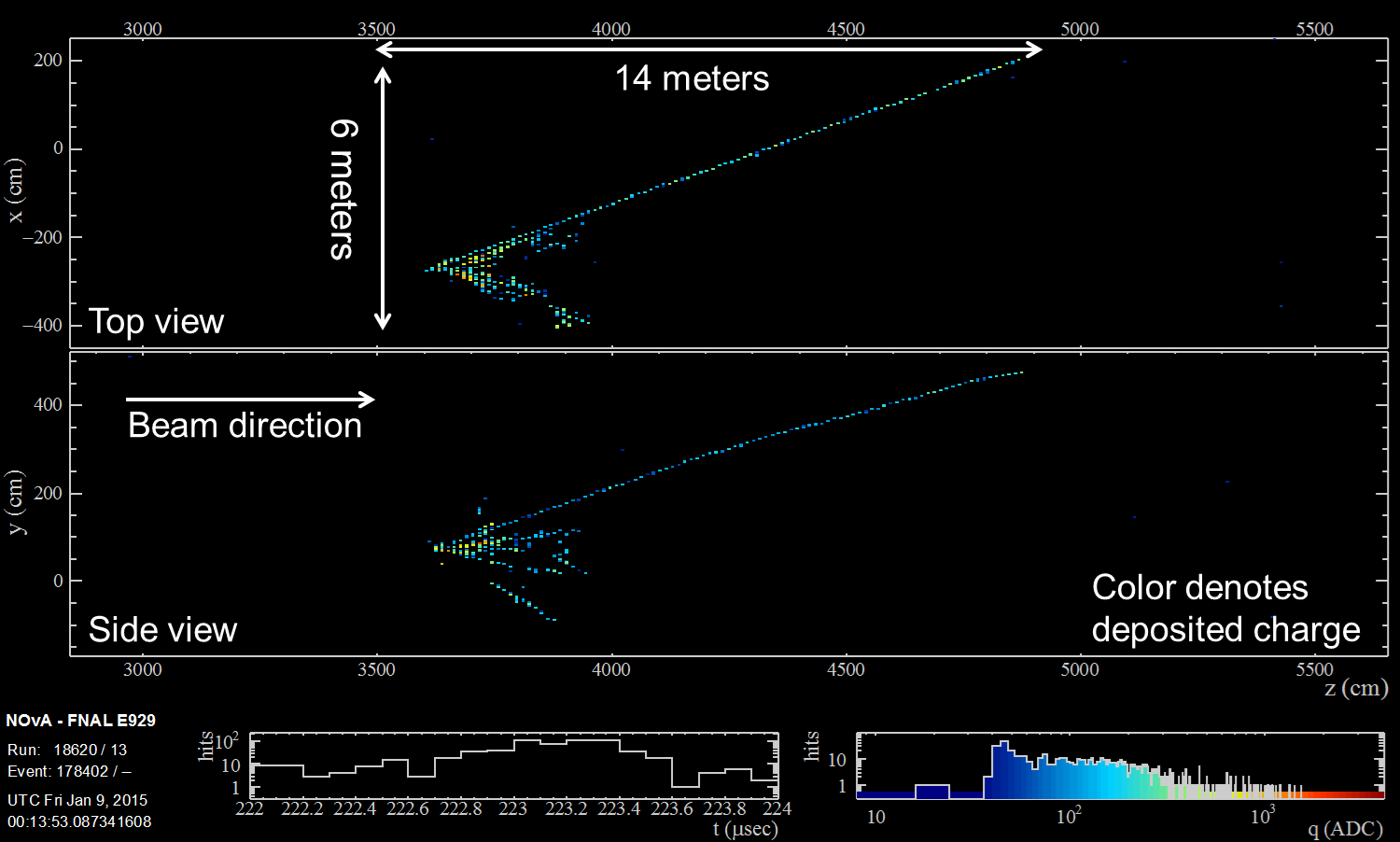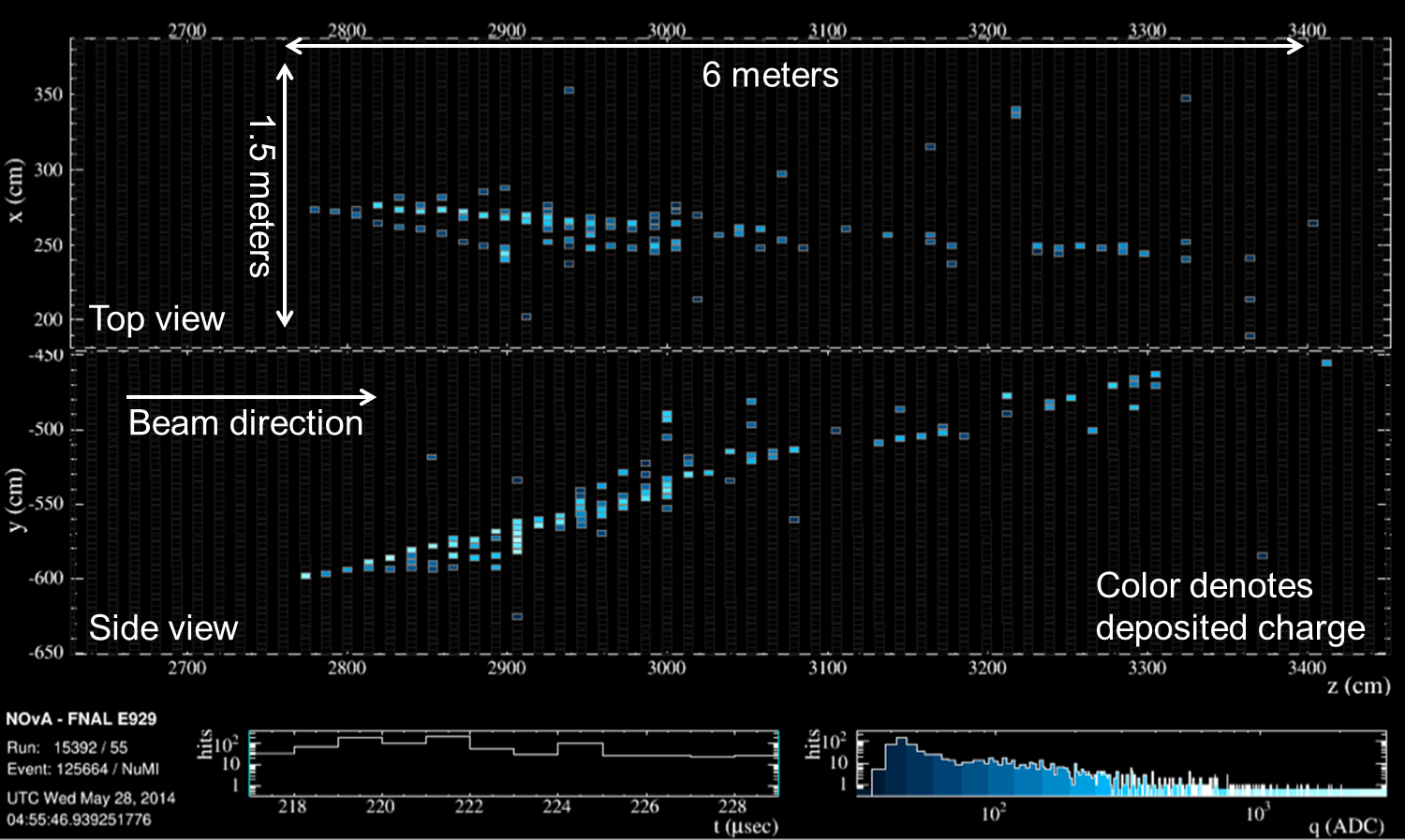Return to the Live Event Display Page , or scroll down to see how neutrinos are found in NOvA.
Five-thousandths of a second of data

Five-thousandths of a second of data Sitting on the surface of the earth, several particles per second are going through you from above. These "cosmic ray muons" come from collisions in the upper atmosphere between energetic particles from somewhere else in our galaxy and a hapless air molecule, producing a shower of particles we can see on the ground. As a human you don't care about a few extra particles compared to the $10^{27}$ atoms that make up your body: but a detector able see each one and is also the huge size of NOvA is flooded with them. NOvA data is recorded in 5ms (Five-thousandths of a second) sized blocks, in which hundreds of particle tracks can be seen.
500 millionths of a second of data

500 millionths of a second of data. Since each flash of light in the detector is recorded with a precise timestamp, looking at a smaller chunk of time makes things look less chaotic. This image is of 1/10th the amount of data shown above, 500 millionths of a second. It also is shown in two views rather than 3D-rendered: the top rectangle is the view from above the detector, the lower one is from the side. Dozens of long straight cosmic ray muons can be seen in this image. Look for a different, spray-like pattern near the location (0,3800cm) in each view.
One Beam Spill

One Beam Spill. The NuMI beam at Fermilab creates a "spill" of neutrinos every 1.3 seconds. Each spill lasts for only 10 millionths of a second: and careful timing (with the aid of the GPS system) is used so that the computers collecting the NOvA data know exactly in which 10 microseconds this happened. Looking only at the slice of time during which the beam fired now shows only two things: a cosmic ray muon on the left side of the detector, and the interesting spray to the right. That is the result of a neutrino from Fermilab hitting an atom in the NOvA detector, producing a spray of subatomic particles that cause the scintillator they pass to give off flashes of light. The scale on the bottom right is color-coded to show how much light each cell saw: from blue (not a lot) to red (a thousand times the minimum).
Zoomed In

Zoomed In. Zooming in on the part of the detector where the neutrino interacted and where the resulting debris flew, we can see one point where all the lines made by the particle debris start: that is the location of the neutrino interaction or "vertex". The 14m long track is a muon ("$\mu$") particle: but this heavy cousin to an electron is not coming from a cosmic ray, but was created when the neutrino collided. We thus know we have caught a muon-type neutrino ("$\nu_\mu$"). The spray of shorter tracks near the vertex is debris from the nucleus of the atom which was struck by the incoming neutrino: the quarks from the proton or neutron which was hit fly out and coalesce into heavy, short-lived particles called "mesons". In this picture, the light you see is most likely coming from $\pi$ mesons, their decay products, and whatever other particles they've knocked loose along their way. The color scale remains proportional to the light seen in each cell of the detector: the light is turned into charge on an "avalanche photo-diode" in order to be measured.
A different neutrino

A different neutrino. This image is of a different neutrino interaction in NOvA, found using the same "zoom in to the right time" method described above. However, it looks quite different than the previous picture. Note the scale: it is only about half the size. It also doesn't have one nice, long muon track, but rather a shorter, fuzzier track. This is what happens when an electron charges through NOvA: they are lighter, so rattle about more as they pass through, and also do not have as much penetrating power as the heavier muons. If an electron-type neutrino ("$\nu_e$") interacts, one of the resulting spray of particles will be an electron (conserving the amount of electron-ness before and after): so we know the neutrino which made this splash was a $\nu_e$. Since the beam starts off at Fermilab composed nearly entirely of $\nu_\mu$, seeing $\nu_e$ at Ash River lets us measure how the neutrinos change or "oscillate" as they travel 810km to the north, moving at very close to the speed of light.
Video Links
A time-lapse video of the detector construction
Building the first block of the detector
Exploring Neutrino Mysteries
NOvA: Building a Next Generation Neutrino Experiment
Detecting Neutrinos with the NOvA Detector
A longer "Neutrinos and the NOvA Detector" documentary, in four parts: 1,2,3,4.
360 video of the NOvA Far Detector. If you're on a computer, click and drag around the video to look in different directions. If you're on a phone or tablet, go full screen and point your device in different directions. There are several:
For posterity, another 360 video of the now decommissioned Soudan Mine Underground Lab showing the MINOS detector and the Mural.
Fermilab has a 360 video tour as well, here's the direct link to the Near Detector. Click on the "targets" to go from one place to the next.
Follow NOvA on social media



